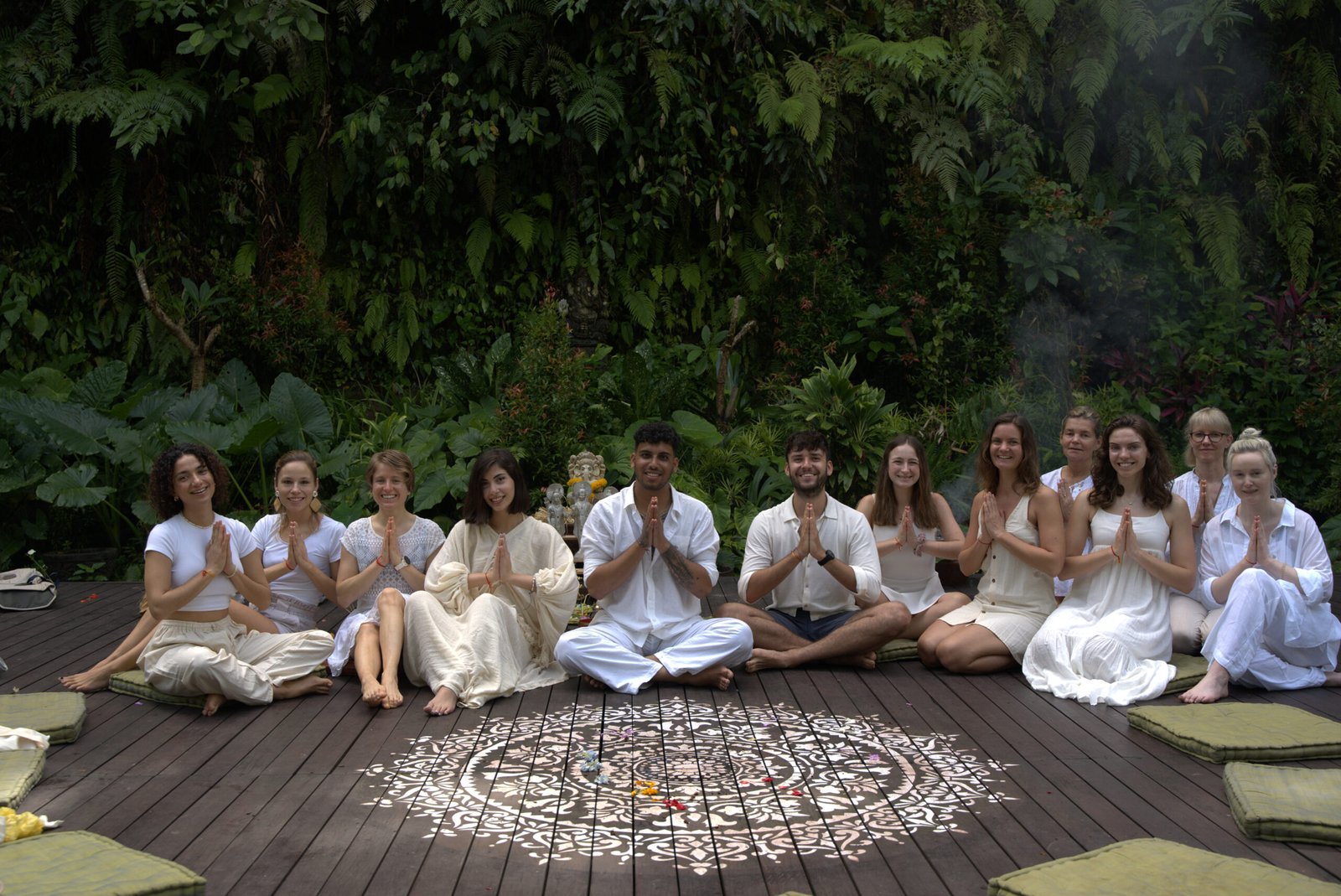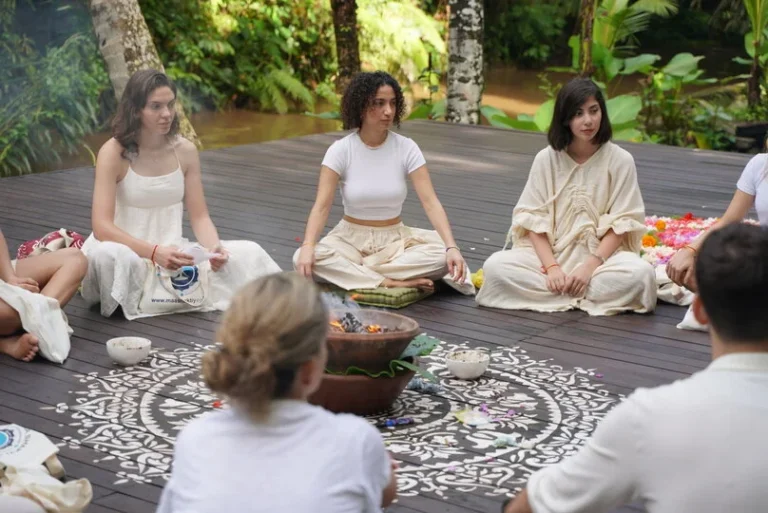Yoga for Beginners: Tips and Techniques
Hi there, fellow yogi-to-be!
Ever wondered what all this fuss about yoga is about? You’ve seen those crazy bendy people on Instagram and thought, “There is no way I could ever do that.” Or maybe you’ve heard of all those mental and physical benefits. Well, let me assure you that yoga is for everyone.
I remember when I first began. I was stiff as a board, convinced that touching my toes, much less a headstand, was impossible. But gradually and steadily, I began noticing a difference. My body felt like rubber, my mind had thoughts of stillness, and I was sleeping better.
This isn’t some magical overnight transformation. It’s a journey, like any other fitness pursuit. And this is just what we will take a deeper look into—your yoga journey. From being able to find a spot for you to practice to learning beginner poses, we will tackle everything. Plus, we will even focus on those stereotypical worries that are most probably holding you back (trust me, I’ve been there!).
So grab your water bottle, find a comfy spot, and let’s get started. Your mat is ready!
Setting Up Your Sanctuary: Preparing for Your Practice
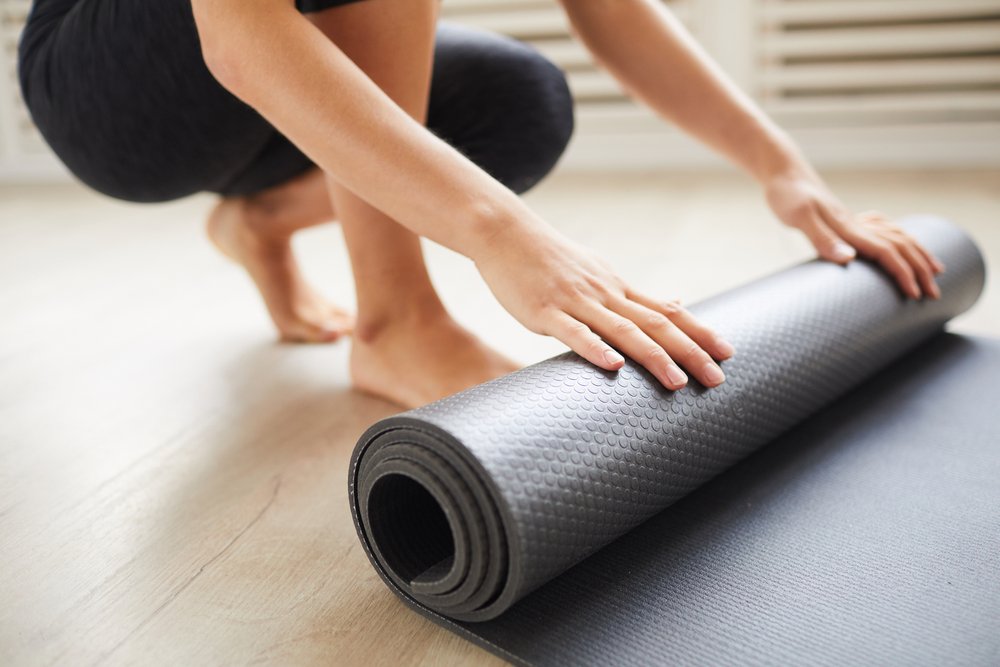
Here’s the thing: sometimes finding that inner peace can feel more difficult than doing a hard yoga pose! For this reason, it’s essential that you create your own space uniquely for it. It would be your special retreat.
- Cuddle Up: Find a corner somewhere quiet in the living room, a sunny spot on your balcony, or the peaceful nook of a park. Pick a place where you can let up and relax. Make sure there are as few distractions as possible from things like the TV or your phone (easier said than done, believe me!).
- Set the Mood: Dim the lights, light a candle (if that is your thing), and put on some soothing music. It could be natural sounds, instrumental music, or simply a good relaxing yoga playlist. The idea is to create an atmosphere that will invite you to slow down and start tuning in.
- Dress the Part: Comfort! Say goodbye to skinny jeans; be in any attire that allows free movement. Think leggings, yoga pants, and loose-fitting t-shirts. Wear nothing that restricts your breathing or causes chafing against your skin.
- Gather Your Stuff: A yoga mat is a great investment, but if you don’t own one already, that’s cool! A towel or a blanket works just fine for the start. Props like yoga blocks can be helpful in certain poses, but they’re not too important, particularly in the beginning. And don’t forget a blanket in case you’d need some extra support or want to use it for cushioning.
It’s your practice, after all! Make it personal! Don’t sweat too much about the “perfect” setup. Just make it a relaxing space that urges you to step on the mat.
Let’s Get Started: Foundational Poses for Beginners

Also Read : Yoga For Kids and Teens
Ready to start your journey through yoga? Let’s start with a few basic poses that shall serve as a ferry for your practice.
- Mountain Pose (Tadasana): This is your fundamental yoga pose. Stand tall with feet hip-width apart, grounding down into the floor through your feet. Imagine a string invisible to anyone, which pulls you up from the crown of your head. Though this pose may seem simple, it is all about just finding the right alignment and hombra.
- Downward-Facing Dog (Adho Mukha Svanasana): A great classic for stretching the whole body. Onto hands and knees; lift hips up and back into inverted V. Your knees can be a little bent at first; do not fret if you cannot touch your heels to the ground. Lengthen your spine.
- Cat-Cow (Bitilasana/Marjaryasana): A flow of movement like a gentle massage for your spine. When you inhale, you’re like a cat arching your back; when exhaling, you’re like a cow rounding your spine. Move slowly and mindfully as you feel a stretch in your back.
- Child’s Pose (Balasana): Your resting and relaxing pose. Kneel on the floor, sit back on your feet, and fold your torso forward, placing your forehead down on the ground, letting go of everything for the moment. Just keep breathing.
- Easy Pose (Sukhasana): A simple seated pose for meditation or pranayama (breathing exercises) that you should do with your legs crossed when seated on the floor, keeping your spine erect. In case you find it difficult to sit on the floor with crossed legs, do try sitting on a block or, for comfort, use the folded blanket.
These poses may seem easy, but they pack a powerful punch; they build strength in the body, improve flexibility, and give you greater body awareness. Don’t worry about getting every last detail perfect; just focus on your breath and enjoy.
The Power of Breath: Incorporating Pranayama
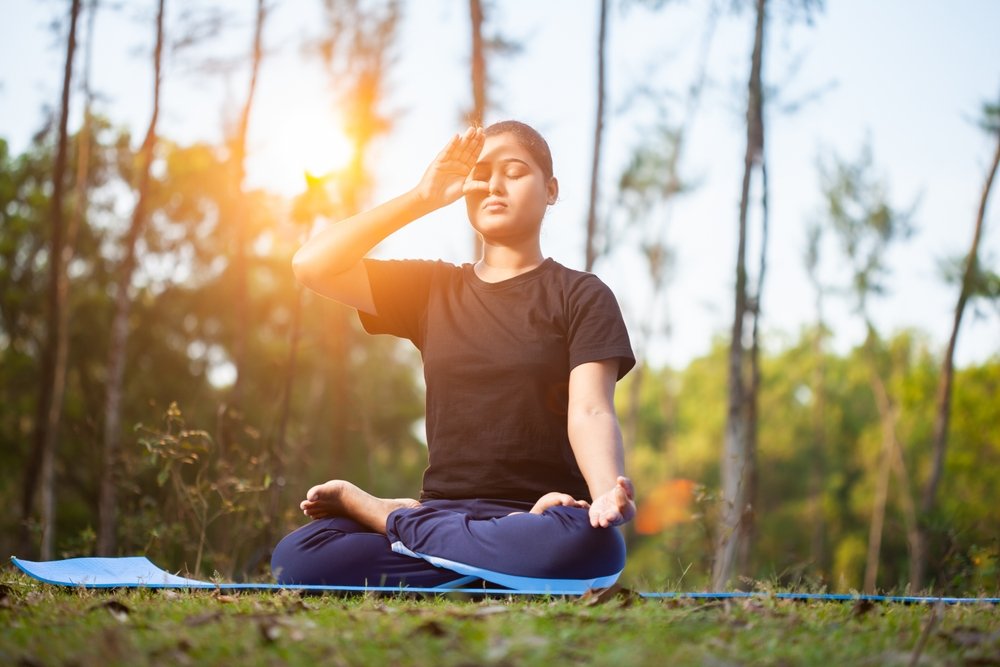
Yoga is much more than just physical postures. It is twisted together with our breath. Pranayama, or yoga breathing techniques, are highly useful tools to calm the mind and reduce stress, to name a few.
Deep Breathing (Diaphragmatic Breathing): Think of a balloon in your belly. Breathe deeply, letting your belly rise as you fill it with air. Exhale slowly, drawing your belly button gently toward your spine. This simple technique promotes the use of the diaphragm, the big muscle below your lungs, for deeper and more relaxing breaths.
Benefits of Deep Breathing:
- Stress Aware: Deep breathing activates the parasympathetic nervous system, which helps calm your body and mind.
- Focus Booster: Deep breathing slows down your process of breathing and improves your concentration and focus.
- Energy Booster: This is believable; it gives you the energy boost because it improves the circulation of oxygen in your system.
Tips for Getting the Most Out of This Breathing:
- Find a Comfortable Position: Just sit or lie down comfortably.
- Close Your Eyes: This helps you limit distractions.
- Place One Hand on Your Belly: This will aid you in feeling the rise and fall of your breath.
- Inhale and Exhale Slowly and Deeply: Go easy with your breaths.
A few minutes of deep breathing can make a notable difference. Please fit it into your day-to-day life whenever you have a sense of stress or depression.
Cultivating Your Practice: Tips for Success

Yoga is not a race. It is a journey of self-exploration. So let’s forget about being perfect and focus on creating a steady practice for the long run.
- Go Slowly and Steady: Beginning small sessions of 10-15 minutes is a great way to start. Gradually work towards longer sessions as you feel more comfortable. Don’t worry about the time marker; focus on doing it right.
- Listen to your body. This is important! After all, yoga is a very personal practice. One day you may feel energized, and the other day you may feel stiff and tired. Respect your limits, rest when you need to, and do not push yourself, especially in the beginning.
- Find a community. Try to take a yoga class for beginners. A good instructor can guide you, correct your alignment, and support modifications depending on the level. Plus, it’s also great for being around other newcomers, thus creating a network of support.
- Do it regularly and often: As with any new habit, you will start to see the benefits if you stick to your yoga practice. Establish a regular exercise routine, even if it’s just 2-5 minutes a day.
Make it fun! Yoga shouldn’t feel like an obligation. - Try to explore different styles of yoga (like Vinyasa, Hatha, or Restorative) until you find one that genuinely resonates with you. Put on some inspiring music, practice with a buddy, or try a themed class just for kicks.
Remember, the aim is to develop a consistent and enjoyable practice for your well-being. Enjoy learning and enjoy your path!
Navigating the Ups and Downs: Overcoming Common Challenges
Let’s get real; every learner would go through challenges in their yoga journey. It is okay if you do not get it right on the first day! Here are some of the most common hurdles and tips on how to overcome them:
- “You know I am not flexible enough!”: This is a common phrase and also quite valid. Remember: flexibility is like any other skill—it takes time and consistent effort to work on. Stay focused on alignment and modification. Don’t beat yourself up for not touching your toes on day one. Take the little victories along the way, and enjoy opening that little bit more each day.
- “My mind keeps wandering!” This is normal; while meditating or practicing yoga, your mind may take a one-way trip to someplace far, far away. When you notice your thoughts drifting, guide your attention back to your breath gently. You may try to repeat a mantra (a word or phrase) to keep your focus.
- “I’m having a hard time keeping the motivation up!” It can be tough finding motivation at times. Set some realistic goals, like practicing yoga for just 10 minutes a day or trying a new pose each week. Perhaps enlist a yoga buddy to help motivate and keep you accountable.
Don’t let these obstacles get you down. Remember your reasons for starting your journey down the path of yoga. Concentrate on some of the benefits you have experienced on and off the mat. And most importantly: be kind to yourself.
Embracing the Journey: Finding Peace on and Off the Mat
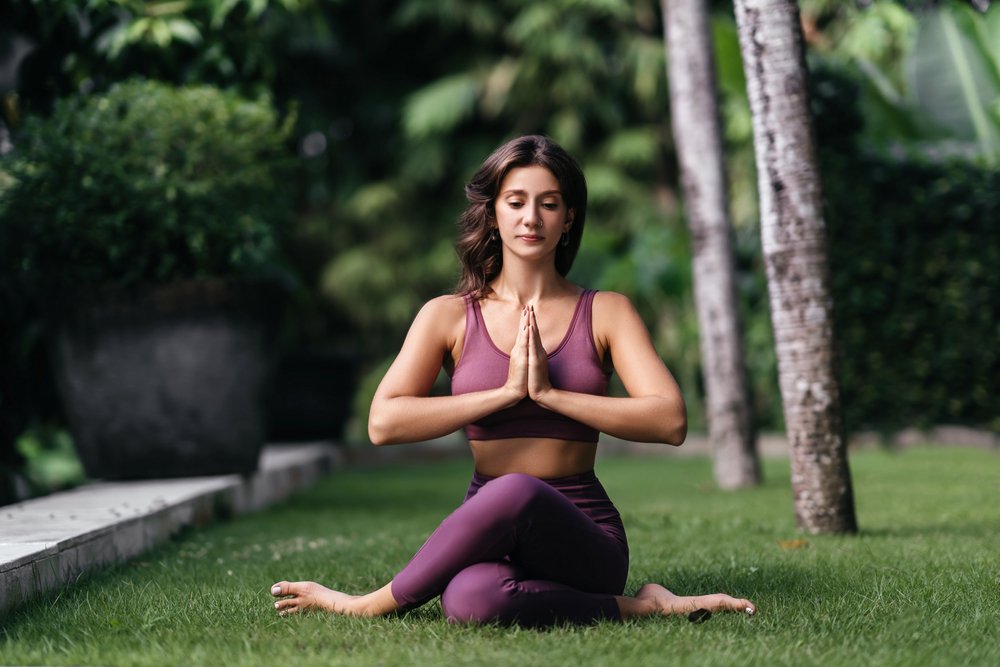
Let us take you through some glimpses into the amazing world of yoga. I hope this guide serves as a source of inspiration in taking the first step or, since it has strengthened the practice you have right now.
Consider this: yoga is a journey without an end. Some days your body feels healthy and centered, some in a more subdued state of sadness. That’s perfectly fine! Enjoy the roller-coaster shifts, pat yourself on the back for the strides you make, and just soak in the moment.
Yoga is about much more than just the yoga postures; it’s about cultivating inner peace, connecting with your breath, and finding stillness in between the chaos of daily living. These benefits reach far past the yoga mat, influencing the way you interact with the world and the challenges you face in your life.
Are you ready to unroll your mat?
I suggest you try out many styles of yoga and try every one of the poses seven or more times to see which one resonates with you. And if you’re a little shy, just remember that everyone starts somewhere.
Resources for Deepening Your Practice:
- Check out the yoga website for more information on classes and schedules.
- Books that Inspire: The Yoga Bible, The Language of Yoga, and The Heart of Yoga.
I adamantly believe that yoga in itself has an enormous capacity to change a person’s life. I am hopeful you will love and enjoy it and the benefits it has to offer along with it.
Namaste!
Also Read : Prenatal & Postnatal Yoga: A Holistic Approach to Motherhood , Yoga for Back Pain & Postural Issues: Lets deal Together

